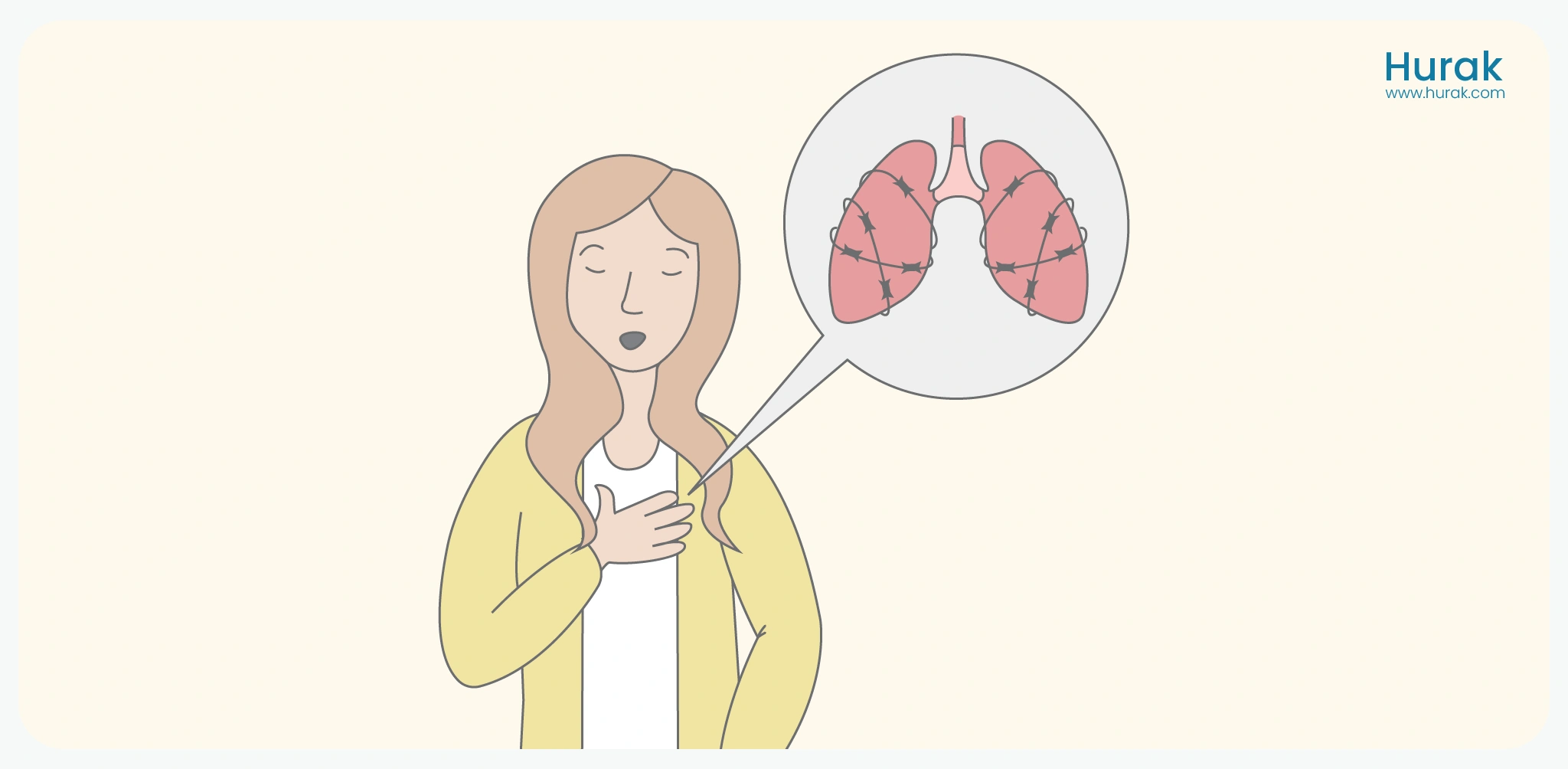
Asthma can affect people of all ages, from young children to older adults, with over 300 million cases worldwide. While it often starts in childhood and may continue into adulthood, some people develop asthma later in life without previous episodes.
Asthma affects males and females and occurs in people of all races and ethnicities. Although there is no cure, the symptoms can be managed, allowing individuals to lead an everyday, healthy life.
What is Asthma?
Asthma is a chronic respiratory condition that affects the airways in the lungs, causing inflammation and narrowing. This can lead to breathing difficulties, wheezing, and coughing. Asthma is a common condition affecting people of all ages, and while it cannot be cured, it can be managed with the right approach.
What are the Different Types of Asthma
There are several types of asthma, each with unique characteristics. Allergens like pollen or pet dander trigger allergic asthma. Non-allergic asthma is caused by irritants such as smoke or strong odours. Exercise-induced asthma occurs during or after physical activity. Occupational asthma results from exposure to irritants in the workplace. Childhood asthma often starts early and is linked to allergies or infections, while adult-onset asthma develops later in life and may not be allergy-related.
What are the Early Signs of Asthma
The signs that help identify asthma are frequent respiratory infections that are slow to resolve. This persistent cough doesn’t respond to standard treatments, breathing difficulties that worsen with specific triggers (like allergens or exercise), and a family history of asthma or allergies. If you notice these signs, you must seek medical advice for a proper diagnosis.

Get trained at recognising early signs of an asthma attack for prompt management. Our First Aid courses offer complete training to help you handle critical situations. Whether you want to improve your skills or workplace safety, these courses help build confidence and expertise. View our Emergency First Aid at Work (EFAW) and Level 3 First Aid at Work courses. These courses meet the UK legal requirements and help you keep people safe.
What are the Common Asthma Symptoms
Asthma symptoms can range from mild to severe and vary from person to person. Common symptoms include shortness of breath, wheezing (a whistling sound when breathing), persistent coughing (especially at night or early morning), and chest tightness or discomfort. These symptoms can worsen during an asthma attack, making breathing even more difficult.
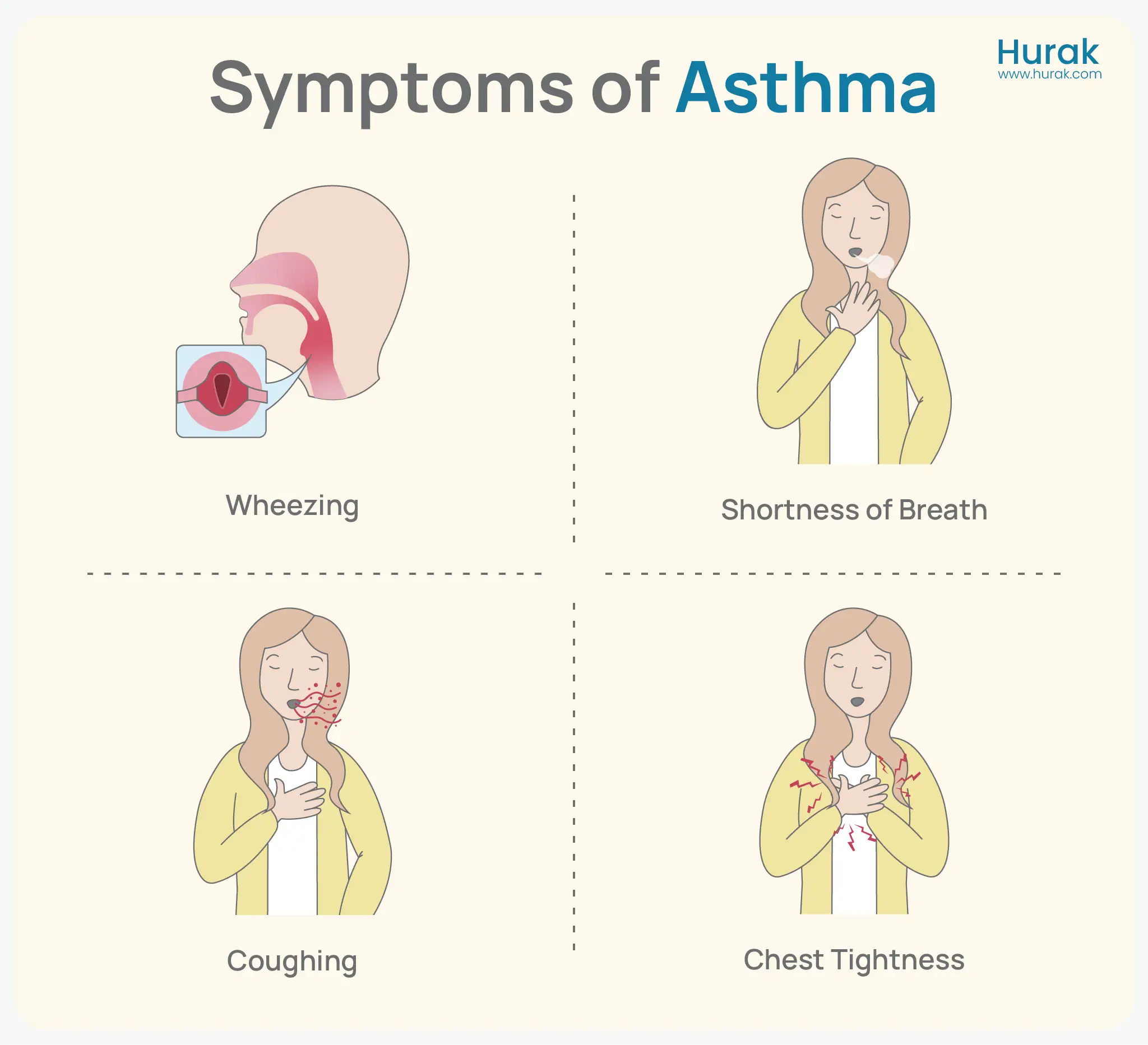
What Causes Asthma?
The exact cause of asthma is not fully understood, but it is believed to result from a combination of genetic and environmental factors. Common causes include the following:
- A family history of asthma or allergies
- Exposure to environmental pollutants or allergens
- Severe respiratory infections in early childhood
- Hypersensitivity to specific triggers such as pollen, dust, or pet dander
What are the Common Asthma Triggers
Asthma triggers are external factors that can exacerbate symptoms. Common triggers include allergens such as:
- pollen, mould, dust mites, and pet dander
- irritants such as tobacco smoke, strong odours
- chemical fumes
- weather changes like cold air or high humidity
- physical exertion, which can cause exercise-induced asthma
- emotional stress or anxiety
Identifying and avoiding these triggers is a key aspect of asthma management.
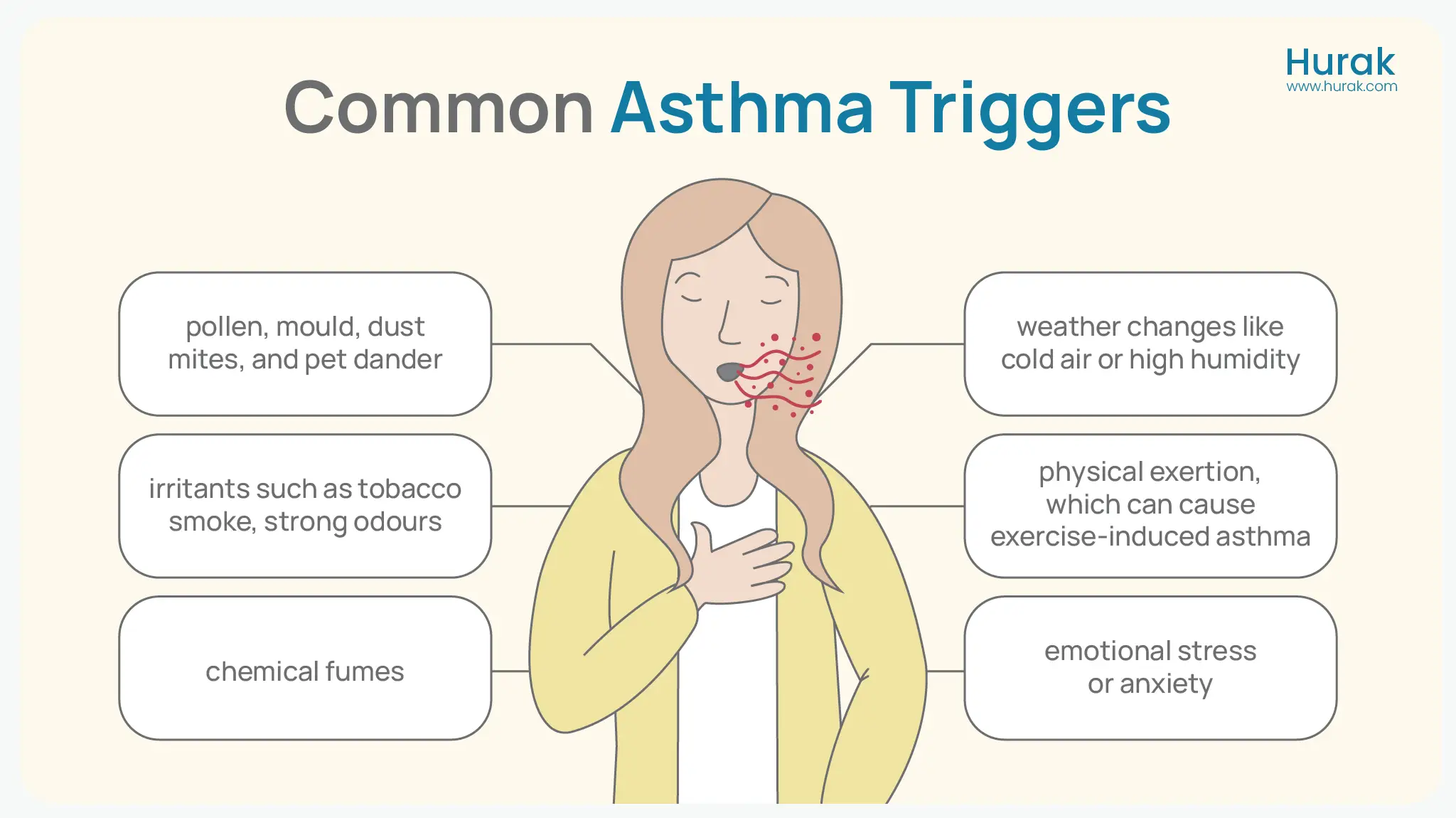
How to Stop an Asthmatic Cough
An asthmatic cough can be persistent and disruptive, but there are ways to manage an asthma attack. As directed by a healthcare provider, a reliever inhaler can provide immediate relief. Staying hydrated helps thin mucus in the airways, making it easier to clear. Avoiding exposure to cold air and other known triggers is important. Anti-inflammatory medications may also be prescribed for more severe cases, and breathing exercises can help reduce coughing episodes by improving lung function.
Diagnosis of Asthma
Doctors diagnose asthma by combining medical history, physical exams, and lung function tests to assess how well the lungs work and how sensitive the airways are. During the medical history assessment, the doctor asks about your symptoms, other health conditions, family history, and any specific triggers that worsen your symptoms. A physical examination follows, where the doctor listens to your lungs for wheezing or other abnormal sounds and checks for inflammation in the chest or back.
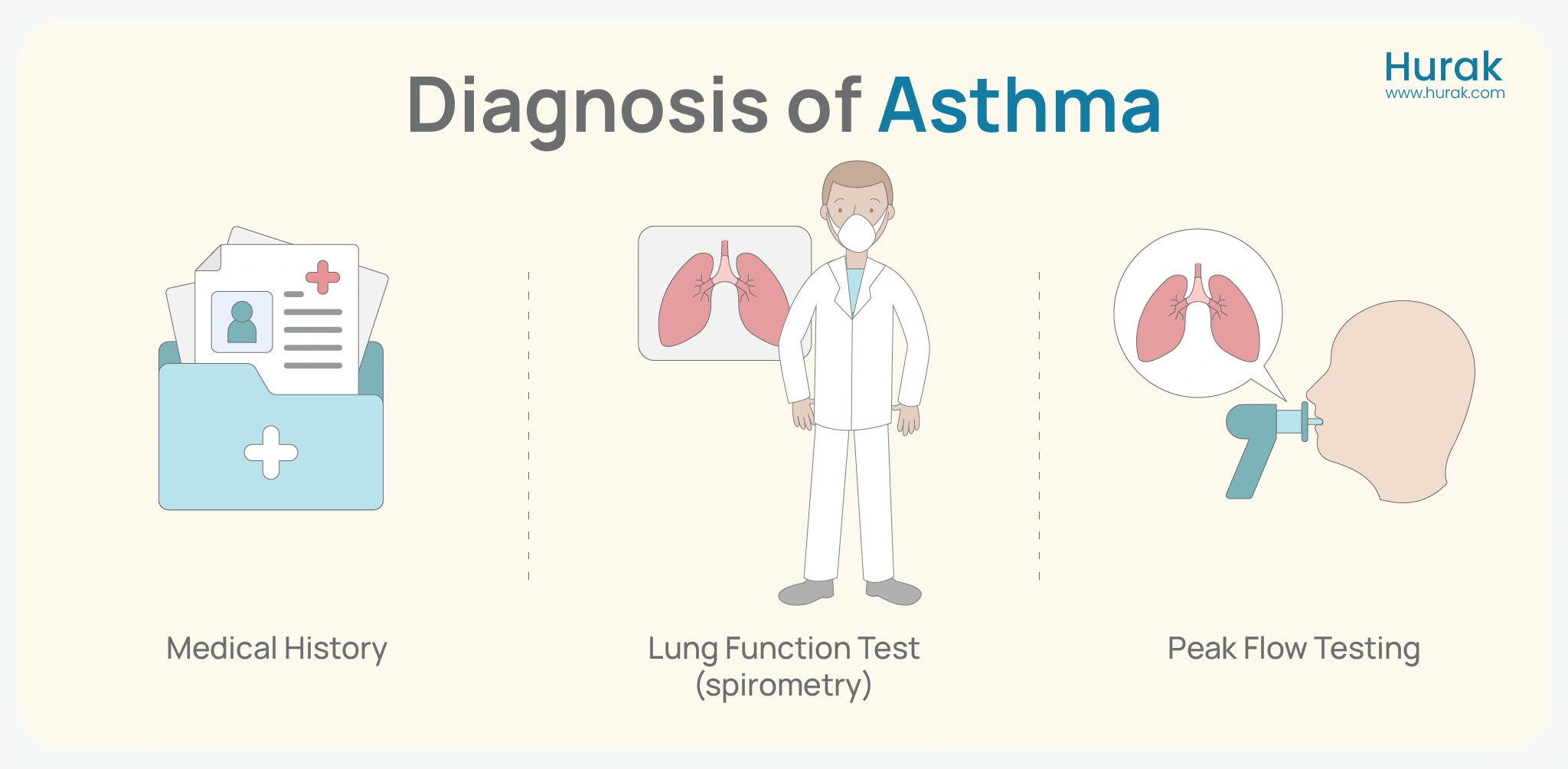
Lung function tests are a key part of the diagnosis. These tests measure how well the lungs are functioning and help determine the severity of asthma. Standard tests include the methacholine challenge, which checks how your airways react to methacholine, a substance that can trigger asthma symptoms and peak flow testing. Peak flow testing uses a peak flow meter to measure the strength of your exhalation. Lower readings often indicate asthma and help monitor the condition and treatment progress.
A peak flow meter is a simple, cost-effective tool for at-home monitoring. To use it, stand up straight and blow forcefully into the meter. Record the highest reading out of three attempts and simultaneously measure your peak flow daily. Keep a chart of your readings and share it with your doctor to help manage asthma more effectively.
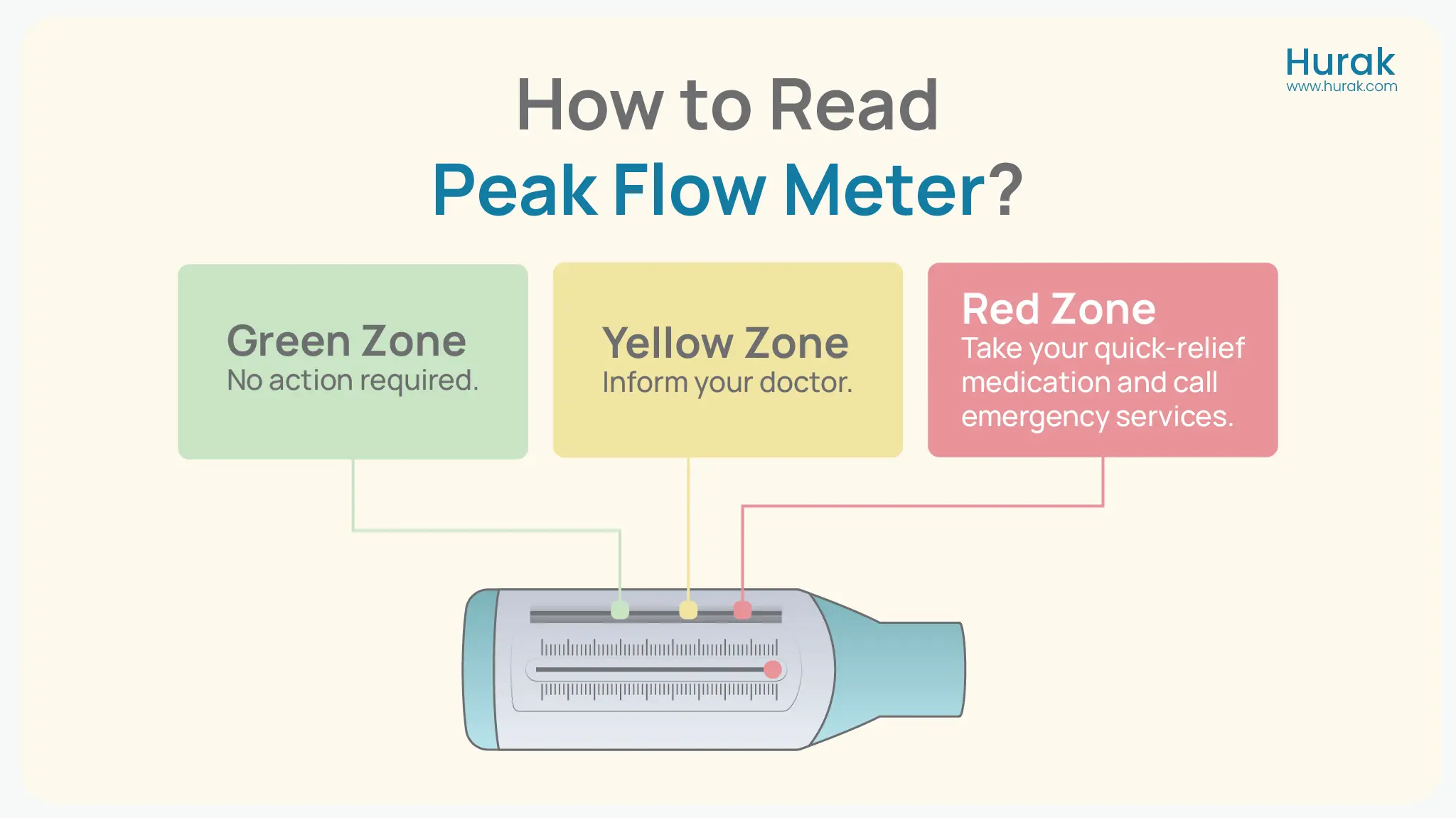
What is the Most Effective Asthma Treatment
Asthma treatment focuses on controlling symptoms and preventing flare-ups. Inhalers are a primary treatment tool, delivering medication directly to the lungs. There are two main types:
- Reliever inhalers for immediate symptom relief
- Preventer inhalers for long-term control
Occasionally, oral medications like corticosteroids or leukotriene receptor antagonists may be prescribed. Allergy treatments such as antihistamines or immunotherapy can be beneficial if allergens trigger asthma. Lifestyle changes, including avoiding triggers, maintaining a healthy weight, and staying active, also significantly manage the condition.
Devices for Inhaled Medications
Inhaler: Inhalers are used to deliver asthma medicine straight to the lungs. They can be metered-dose inhalers (MDIs) or dry powder inhalers (DPIs). Sometimes, a spacer or holding chamber is added to MDIs to help the medicine reach the airways better and lower the chance of side effects.
Nebuliser: A nebuliser changes the medicine into a mist that’s easier to breathe in than an inhaler. This might be a better option for patients who have trouble breathing.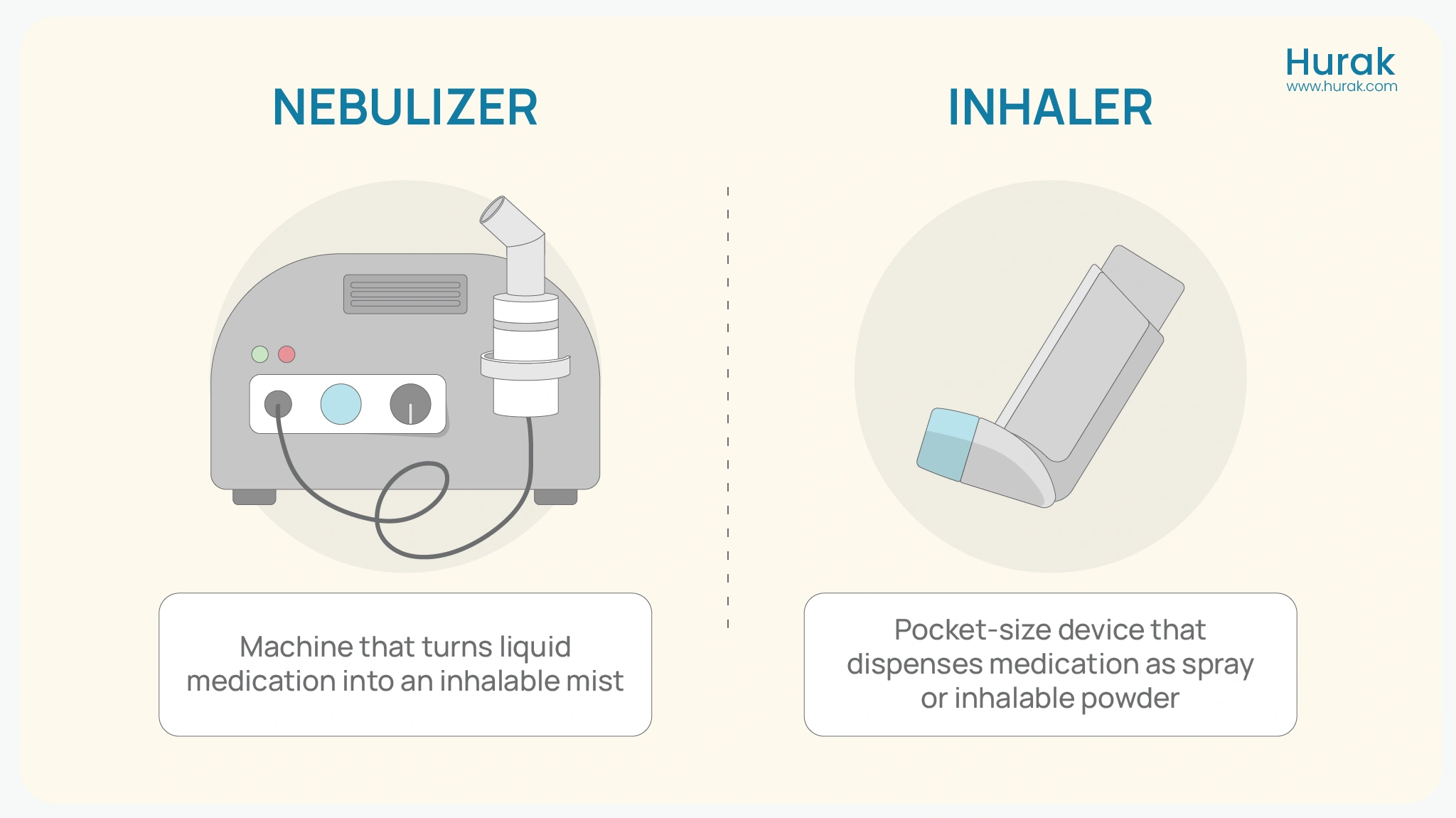
FAQs
What is asthma?
Asthma is a chronic respiratory condition that causes inflammation and narrowing of the airways, leading to symptoms such as breathing difficulties, wheezing, and persistent coughing. While it cannot be cured, treatment and lifestyle changes can be managed effectively.
What are the common symptoms of asthma?
Common asthma symptoms include shortness of breath, wheezing (a whistling sound during breathing), persistent coughing (especially at night or early morning), and chest tightness or discomfort. These symptoms may worsen during an asthma attack.
What are the early signs of asthma?
Early signs of asthma include frequent respiratory infections that are slow to resolve. This persistent cough is unresponsive to standard treatments, breathing difficulties triggered by allergens or exercise, and a family history of asthma or allergies.
What are the main treatments for asthma?
Asthma treatments include inhalers, such as reliever inhalers for immediate symptom relief and preventer inhalers for long-term control. Additional treatments may include oral medications like corticosteroids, allergy treatments like antihistamines, and lifestyle modifications to avoid triggers.
What causes asthma?
Asthma is believed to result from genetic and environmental factors. Common causes include a family history of asthma or allergies, exposure to environmental pollutants, severe respiratory infections in early childhood, and hypersensitivity to triggers like pollen, dust, or pet dander.
How can I stop an asthmatic cough?
To manage an asthmatic cough, use a reliever inhaler as directed by a healthcare provider, stay hydrated to thin mucus, avoid cold air and triggers, and consider anti-inflammatory medications if prescribed. Breathing exercises can also help reduce coughing episodes.
What are the different types of asthma?
Types of asthma include allergic asthma (triggered by allergens), non-allergic asthma (caused by irritants), exercise-induced asthma, occupational asthma (from workplace irritants), childhood asthma (linked to allergies or infections), and adult-onset asthma (which may not be allergy-related).
Conclusion
Asthma is a manageable condition with proper treatment and lifestyle adjustments. Understanding its symptoms, causes, triggers, and treatment options allows people to take control of their health. Working closely with healthcare providers, people with asthma can lead active and fulfilling lives while minimising the condition’s impact.




